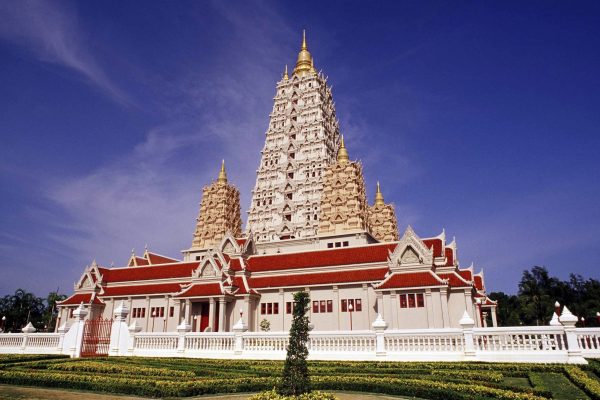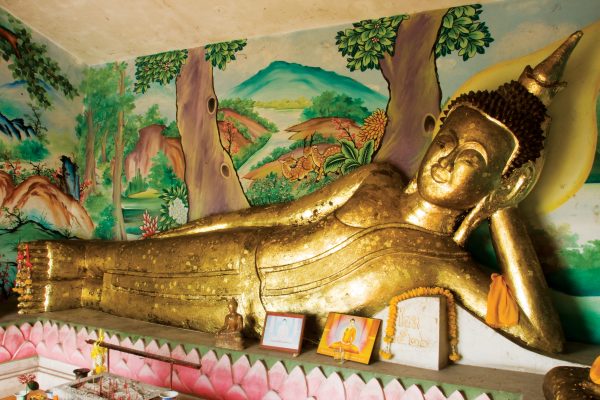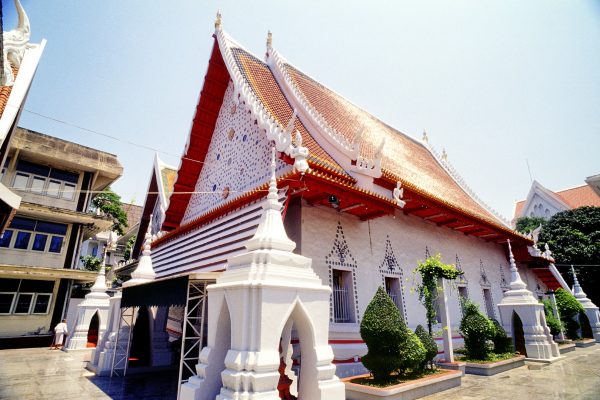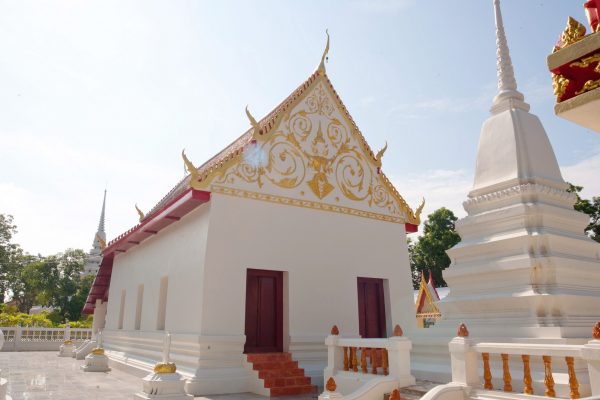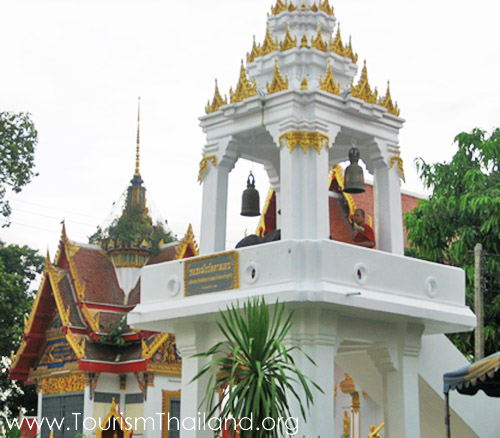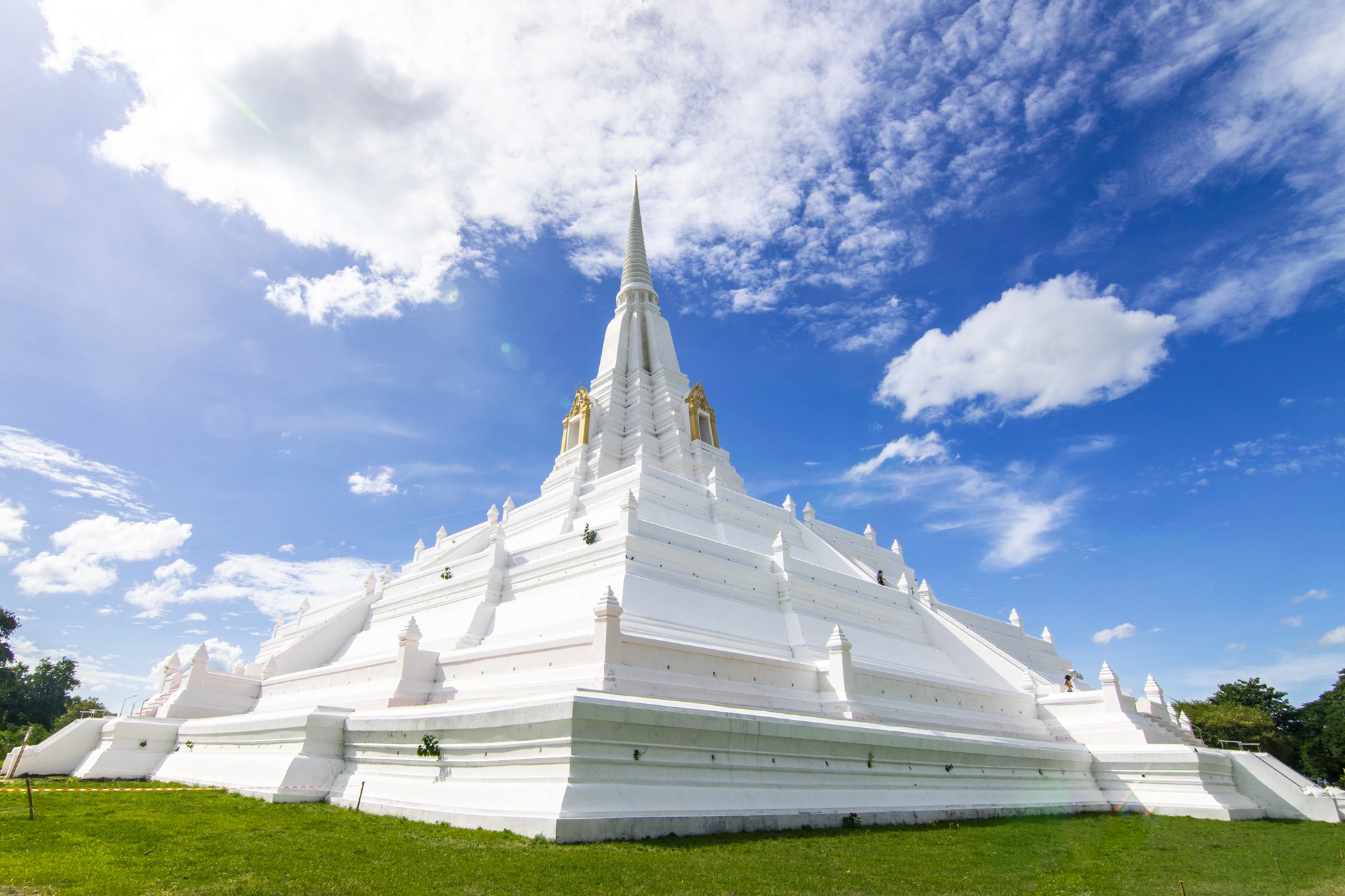
Wat Phu Khao Thong
The Phu Khao Thong chedi is situated about two kilometres northwest of the city Island. It was built by King Ramesuan in 1387. Burengnong, the Burmese king, built three layers of the large superimposed base in the Burmese style after he seized Ayutthaya in 1569 and named it Phu Khao Thong. The main body of the Thai-style chedi was built later.
Wat Phukhao Thong is located 2 kilometers northwest of the royal palace.Khamhaikan Chao Krungkao (Testimony by the People from the Old Kingdom) manifested that Phrachao Bhureng Noung of Hongsawadi commanded the construction of a gigantic Mon-style pagoda to commemorate his victory after the successful siege of Ayutthaya. However, as the Burmese army returned to its home country, merely the pagoda base was built. After Somdet Phra Naresuan Maharat declared the independence of Ayutthaya in 1584, he gave the royal command to superimpose a Thai-style pagoda on the large Mon-style base at Thung Makham Yong. It can be said that the uniqueness of the pagoda is the combination of 2 architectural styles.Formerly, Chedi Phukhao Thong is a massive pagoda towering in the middle of paddy fields and can be seen from afar. Therefore, the temple adjacent to this pagoda was also given the similar name: Wat Phukhao Thong. Department of Public Works and Town & Country Planning collaborated with the Fine Arts Department to erect the equestrian statue of King Naresuan in front of Wat Phukhao Thong. It is situated very close to Queen Sri Suriyothai Monument which has been built earlier by Department of Public Works and Town & Country Planning. The area mainly features an open space of flood-plains and moulds, so it became major battlefields between Thai and Burmese armies in both periods, including the fights on elephants’ backs. It is unfortunate that the temple was abandoned after the 2nd collapse of Ayutthaya kingdom. However, Phra Maha Chedi still maintains its religious significance, as mentioned in Nirat Phukhao Thong written by Sunthorn Phu during the reign of King Rama III. Several visitors nowadays, likewise, go there for veneration. It is not until the year 1957 that monks are allowed to reside at the temple again.

